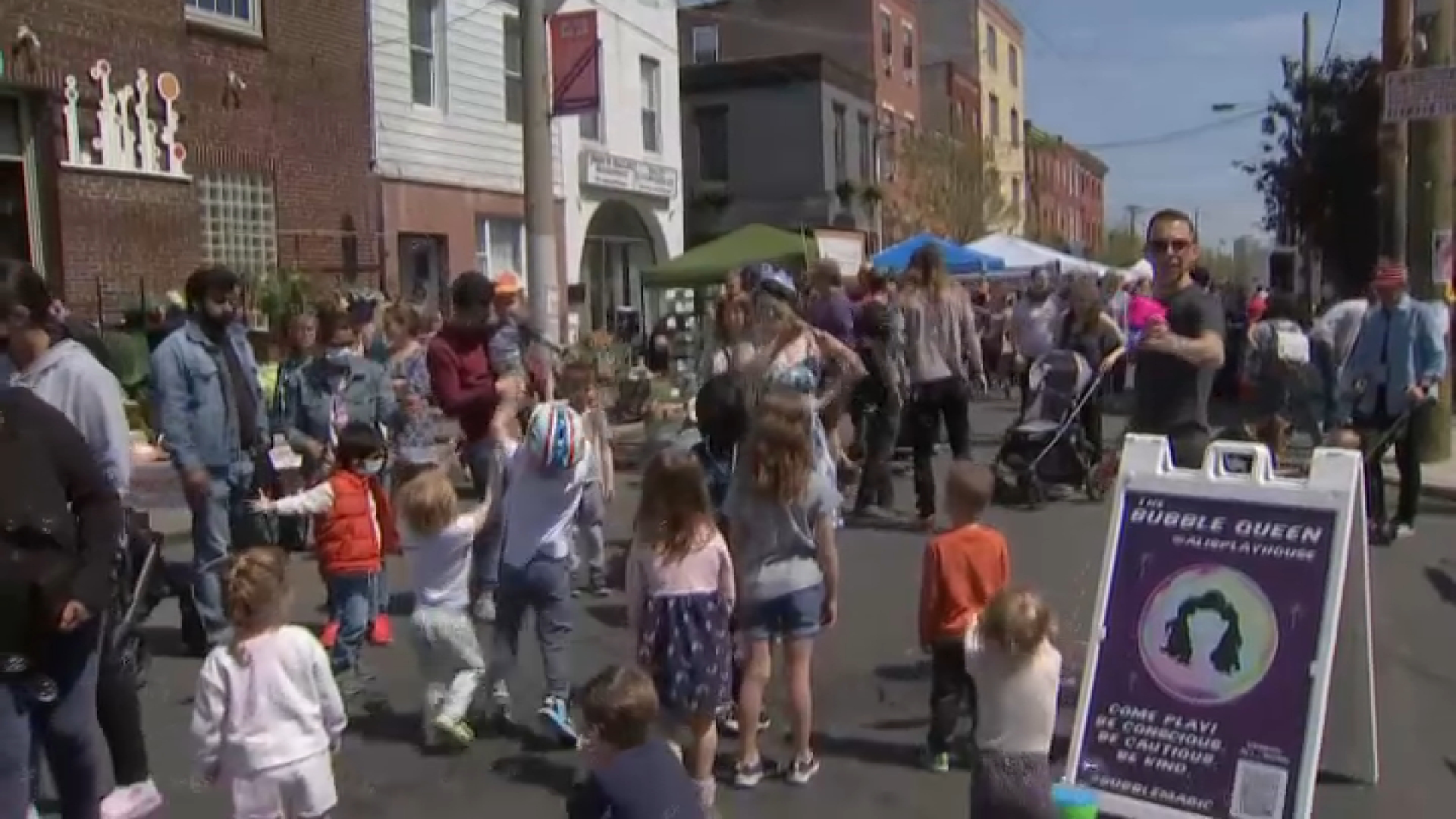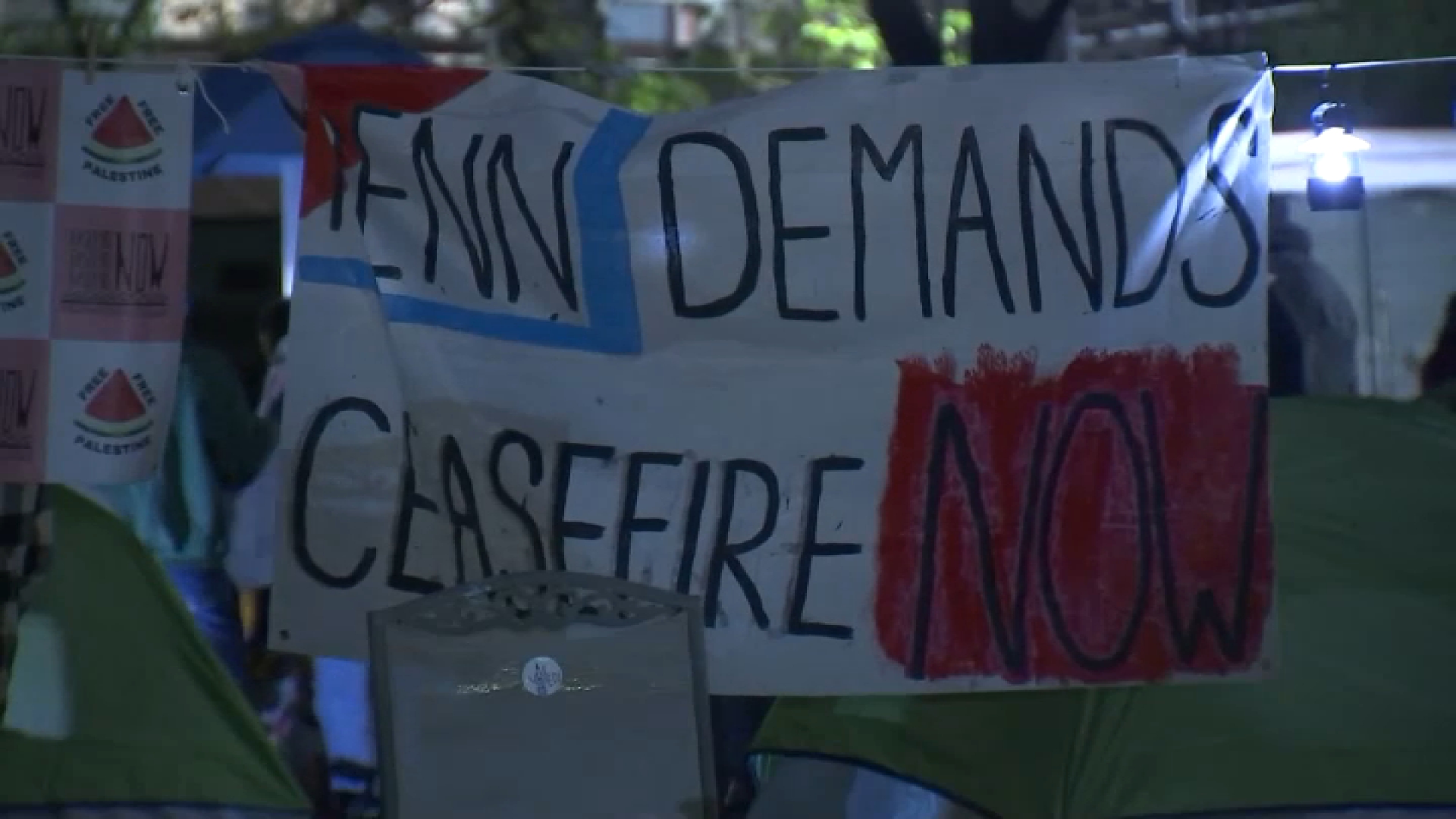Brokenhearted skateboarders long banned from Philadelphia's internationally renowned shredding paradise of Love Park may have a new object of affection: Paine's Park.
The $4.5 million space, which has been about a dozen years in the making, officially opened to boarders after a ribbon-cutting Wednesday. Just don't call it a skate park.
"(It's) a new public urban plaza that happens to be skateable,'' said Mark Focht, first deputy commissioner of the city's parks and recreation department.
Paine's Park sits next to a popular exercise path along the Schuylkill River, just below the Philadelphia Art Museum. It offers amenities for boarders and pedestrians alike: Railings, flats and banked walls for skating, plus seating areas and events like concerts for those not on four wheels.
The long-awaited, 75,000-square-foot space became a reality through a public-private partnership spearheaded by Franklin's Paine Skatepark Fund, an advocacy group founded after boarders were banned from Love Park.
Also called JFK Plaza, the downtown park that's home to Robert Indiana's LOVE sculpture had become an accidental mecca for skaters because of its granite ledges, benches and steps. It was featured in a Tony Hawk video game and partly credited for bringing the X Games to Philadelphia in 2001 and 2002.
That was also about the time then-Mayor John Street banned boarders, saying they were destroying the park's stonework and clashing with other visitors. The issue became a flashpoint in the mayor's race and a cause celebre for shredders nationwide; even the plaza's designer -- urban planner Edmund Bacon, the father of actor Kevin Bacon -- took sides and backed the skaters.
Local
Breaking news and the stories that matter to your neighborhood.
Street later offered boarders the land to create their own park about a mile away, but no money to build it. The project moved slowly through planning and permitting phases, and fundraising was difficult because Franklin's Paine was essentially a volunteer group with no office space or staff. The lack of progress led to skepticism about its viability -- and then recession hit.
"With every passing year, I think it became harder to say this is really happening,'' said Claire Laver, who was hired as the organization's executive director in 2009.
Eventually, the city and state funded most of the project, with some support from foundations and individual donors. The city even donated some familiar building material: granite benches reclaimed from Love Park.
Laver noted the park also features about two dozen benches specially designed to be unattractive for skating tricks, in effect reserving them for pedestrians. Cobblestone entrance paths ensure boarders must walk into and out of the plaza, hopefully reducing potential collisions with bikers and joggers on the exercise path. Planned park programming includes concerts and outdoor movies.
Skateboarder Rob Williams, 28, of Philadelphia, called the new space a victory for thousands of boarders whose recreational options have been unfairly limited for too long.
"Better late than never,'' Williams said. "The park should have been open 10 years ago.''
Williams hopes the plaza will serve as a much-needed social hub for boarders of all ages and backgrounds and prove that skating culture can seamlessly blend into urban life. If Paine's Park is a success, he said, maybe the city will create more spaces like it.
Philadelphia badly lags behind peers like Houston, San Diego and Los Angeles in terms of the ratio of skaters to skateparks, according to a 2011 study commissioned by Franklin's Paine.
The report, which estimated Philadelphia has about 46,000 skateboarders, found that the sport is vastly underserved here, with only three dedicated public spaces across the city. Yet tennis, baseball and basketball enthusiasts have hundreds of facilities to choose from.
Franklin's Paine is partnering with parks and recreation officials to find a better balance, building a pocket skate park in the Fishtown neighborhood and working to create another in the city's Grays Ferry section. Ideally, the group wants to help develop a citywide master plan for skateboarding, as both Seattle and Portland, Ore., have done.
For now, it appears the completion of Paine's Park is a moment to savor.
Inga Saffron, architecture critic for The Philadelphia Inquirer, praised the space last week, writing that "it's ironic that the skaters, banished from Love Park because of conflicts, have built a park that encourages mingling.''
"Paine's Park is not just a top-notch skate park,'' Saffron wrote, "it is a fine public park.''



